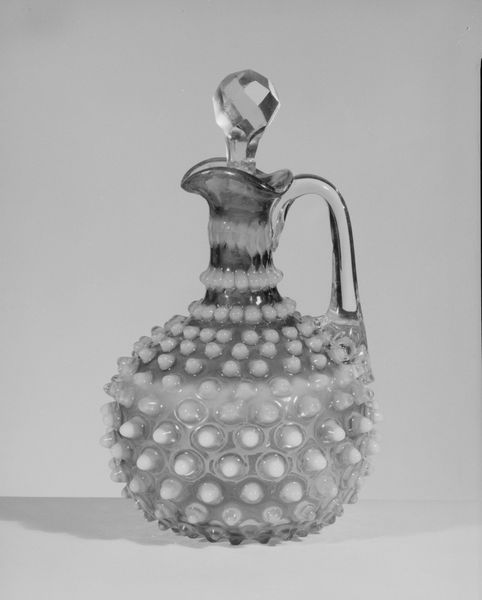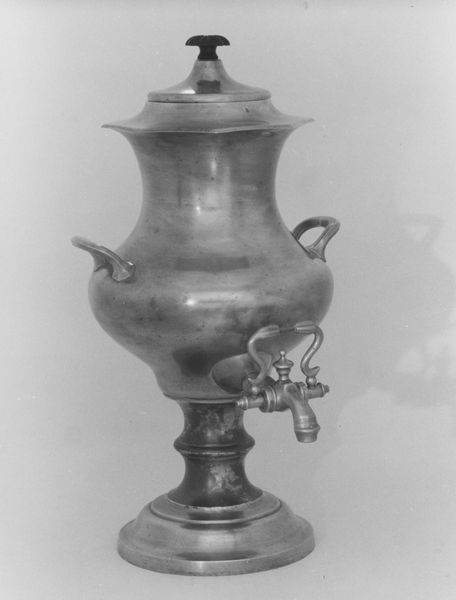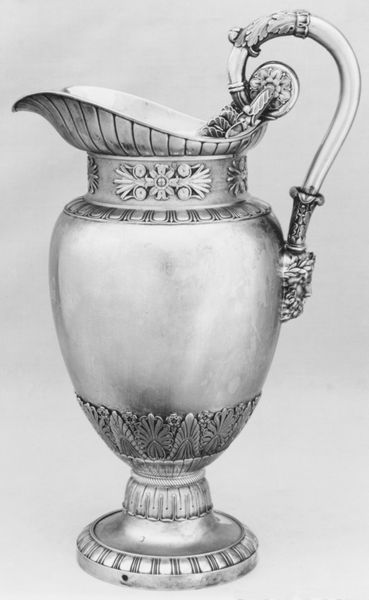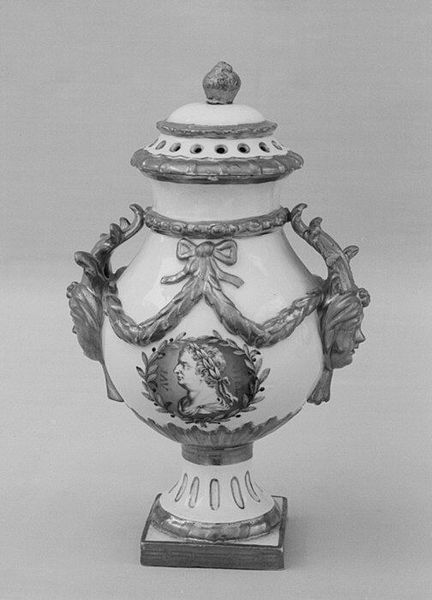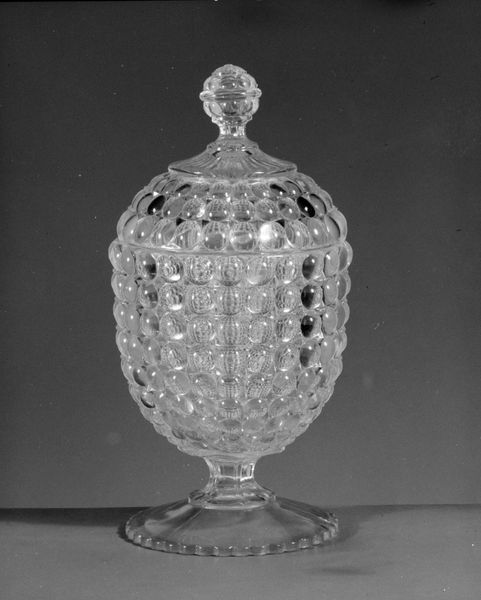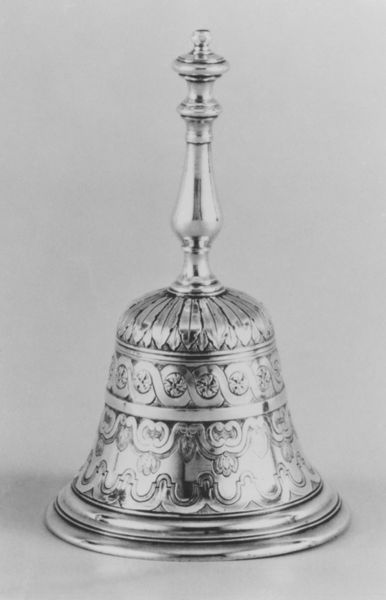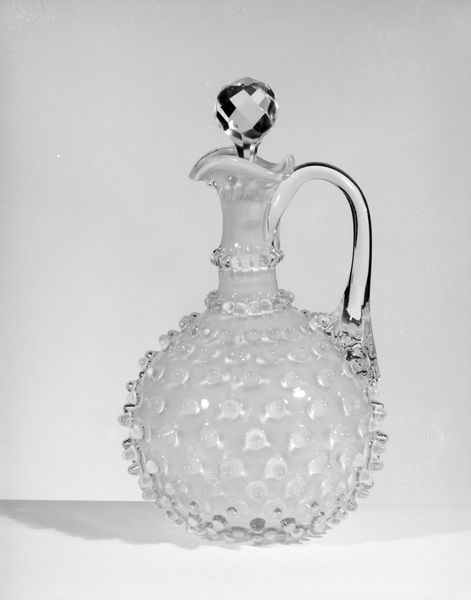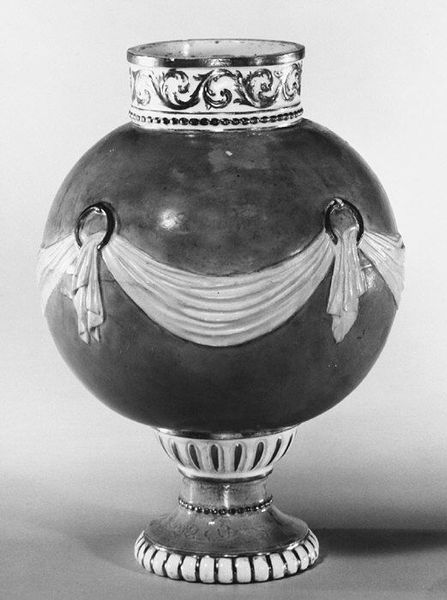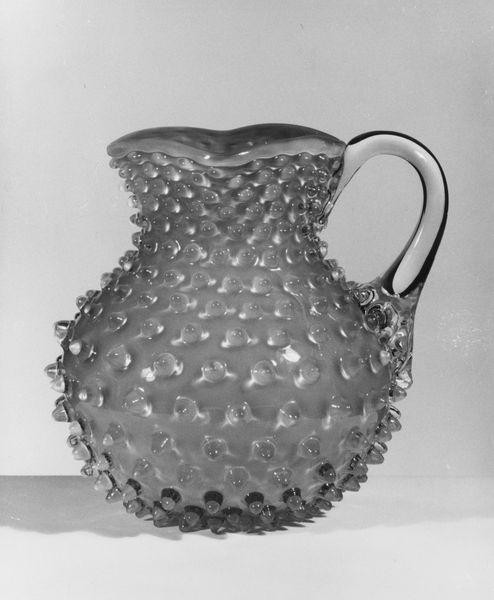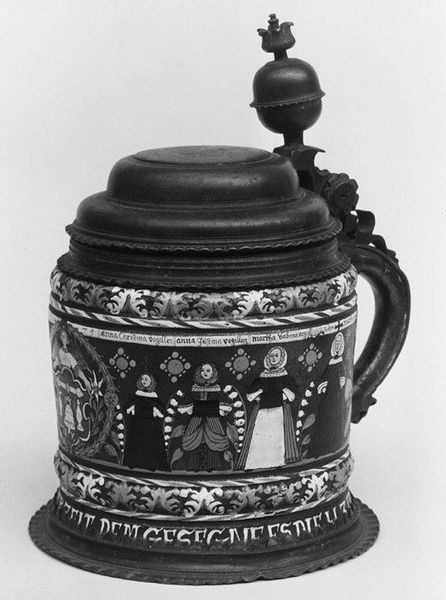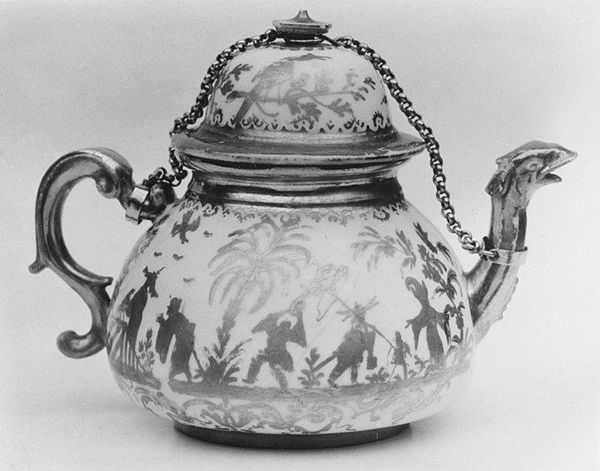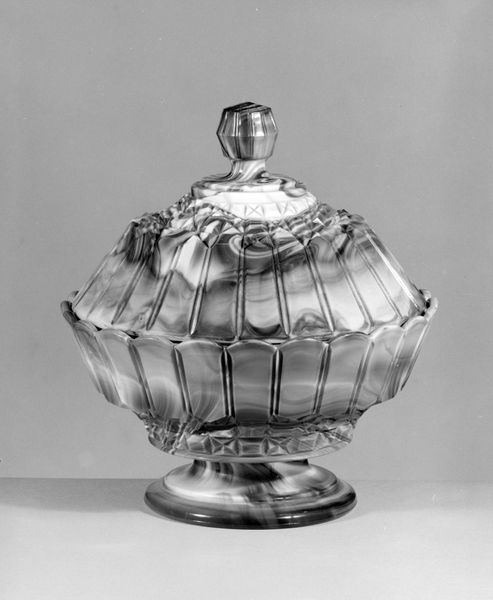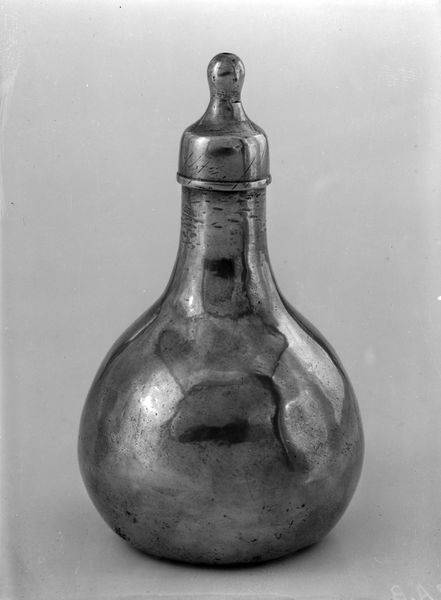
glass, sculpture
#
sculpture
#
glass
#
black and white theme
#
sculpture
#
black and white
#
decorative-art
Dimensions: H. 7 1/2 in. (19.1 cm)
Copyright: Public Domain
Curator: At first glance, the pattern almost vibrates off the surface! All those raised dots give the form an almost organic, plant-like feel, despite the sleekness of the glass. Editor: We’re looking at what’s called a "Hobnail Cruet," dating between 1887 and 1896, created by Hobbs, Brockunier and Company. This decorative glass piece resides here at the Metropolitan Museum of Art. Curator: What I find compelling is the overall structure: how the handle sweeps upwards so gracefully. But then you're constantly drawn back to the "hobnails," as you say, because their geometric regularity creates visual tension with that free-flowing handle. The piece feels poised between strict order and fluid motion. Editor: Absolutely. This type of glass cruet reflects the rise of industrial design in the late 19th century. The method of production, using molds, allowed for mass manufacture. But let's consider who was acquiring such items. This speaks volumes about middle-class aspirations during the Gilded Age. Having this on display signified having achieved a certain level of refinement. Curator: You raise an important point: how design served as an expression of social identity. For me, the choice of glass emphasizes how domestic display became another realm where one's "cultured" sensibility was placed on view. Editor: Right, it wasn't enough to own something functional; one needed a piece reflecting sophisticated taste. Consider this: the very ubiquity of mass-produced items caused certain manufacturers to market products stressing elegance and quality, using marketing strategies to cultivate distinction. Curator: Well, however successful their marketing efforts might have been, there’s no doubt the object still exudes its own undeniable charisma, with its tactile design. Editor: I agree. Viewing art objects as material signifiers offers only one small glimpse into an artifact's greater history. It really enriches one's engagement once that historical lens is integrated. Curator: It does prompt an enhanced way of appreciating something, regardless of provenance. We could go around in circles arguing whether form follows function. The lasting allure resides in that interaction— the visual language embedded within.
Comments
No comments
Be the first to comment and join the conversation on the ultimate creative platform.
